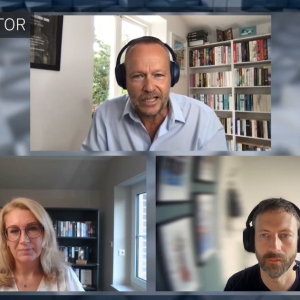By Rachel Chalmers
Caldera Inc’s mammoth Statement of Facts in its antitrust lawsuit against Microsoft Corp provides eerie parallels to the US Department of Justice’s allegations in its own Microsoft antitrust case. Caldera now owns DR-DOS, the rival to MS-DOS that was developed by Digital Research Inc (DRI) in the eighties. According to Caldera, Microsoft fought DR-DOS using almost exactly the same anti-competitive techniques the DoJ claims Microsoft used against Netscape Communications Corp’s Navigator.
Caldera’s evidence includes deposition testimony from Bill Gates, Steve Ballmer and Brad Silverberg, as well as plenty of subpoenaed email – invariably the most enlightening evidence presented in trials such as this one. Bill Gates and the senior executives at Microsoft never expected that their email and other internal reports and communications would be produced and reviewed as a record of their anti-competitive conduct, the lawyers write with barely concealed glee.
Their key contentions are: that Microsoft used vaporware announcements to dampen interest in DR-DOS; that Microsoft used fear, uncertainty and doubt (FUD) to counter the DR-DOS threat; that Microsoft developed intentional incompatibilities to make it impossible to use DR-DOS with Windows; and that Microsoft used exclusionary licensing terms to block out DR-DOS.
The 93-page Statement includes quotes from Microsoft CEO Bill Gates which, on the face of them, appear to be devastating admissions in support of Caldera’s case. For a start, Gates seems to share the widely held view that DR-DOS was in fact far better than Microsoft’s rival offering. [MS-]DOS 4 is a mess to discuss, Gates wrote in 1988, bugs, too big, strange shell interface, who wrote it? DOS 4 has a terrible reputation.
Nor had the condition of Microsoft’s cash cow improved by 1989: While DOS continues to be our most important and most profitable product, over the last four years we have done very little with it technically, Gates said. Even as late as 1992, by which time DR-DOS belonged to Novell Inc, little had changed as far as MS- DOS was concerned. I think to be successful a DOS update has to… match the garbage that DR-DOS does, admitted Gates.
With MS-DOS development apparently moribund, Caldera asserts that Microsoft decided to spread disinformation about its rival. We are engaged in a FUD campaign to let the press know about some of the bugs, Brad Silverberg wrote in 1991. We’ll provide info a few bugs at a time to stretch it out.
In 1992, an MS-DOS PR Plan set this objective: FUD DR-DOS with every editorial contact made. Aggressive as Microsoft’s public statements were, PR was neither the first nor the only line of attack. Another was the imposition of exclusionary contracts. Opus agreement has finally been signed by Redmond, announced the October 1990 Microsoft OEM Status report, Another DRI prospect bites the dust with a per processor DOS agreement.
Caldera claims Microsoft’s third and nastiest tactic was to disable DR-DOS running under Windows. First, lawyers say, developers tried simple sabotage. They quote an email written by senior engineer Phil Barrett in 1991. The evil laughter is a nice touch: heh, heh, heh… my proposal is to have bambi [the code name for Windows 3.1] refuse to run on this alien OS [DR-DOS], Barrett writes. The approach we will take is to detect DR 6 and refuse to load.
Finally, of course, Microsoft claimed to have eliminated DOS altogether, making DOS and Windows a single product – much as it now claims Windows and Internet Explorer are inseparable. Coincidence, or conspiracy? Caldera’s lawyers urge the latter conclusion.
Our filings establish Microsoft’s liability in our antitrust lawsuit, says Caldera CEO and president Bryan Sparks. For the first time since we filed our case in July of 1996, the public will be able to see some of the evidence that supports our contention that Microsoft systematically and routinely engaged in predatory acts in maintaining their operating system monopoly – acts that involved employees at all levels of the company.
This is not the last you’ll be hearing from Caldera’s lawyers. A series of hearings is scheduled to begin in Salt Lake City on May 25, before US District Court Judge Dee Benson. The case will go to a jury trial on January 17, 2000. It’s just one of the fireworks expected to accompany Microsoft’s new millennium.






